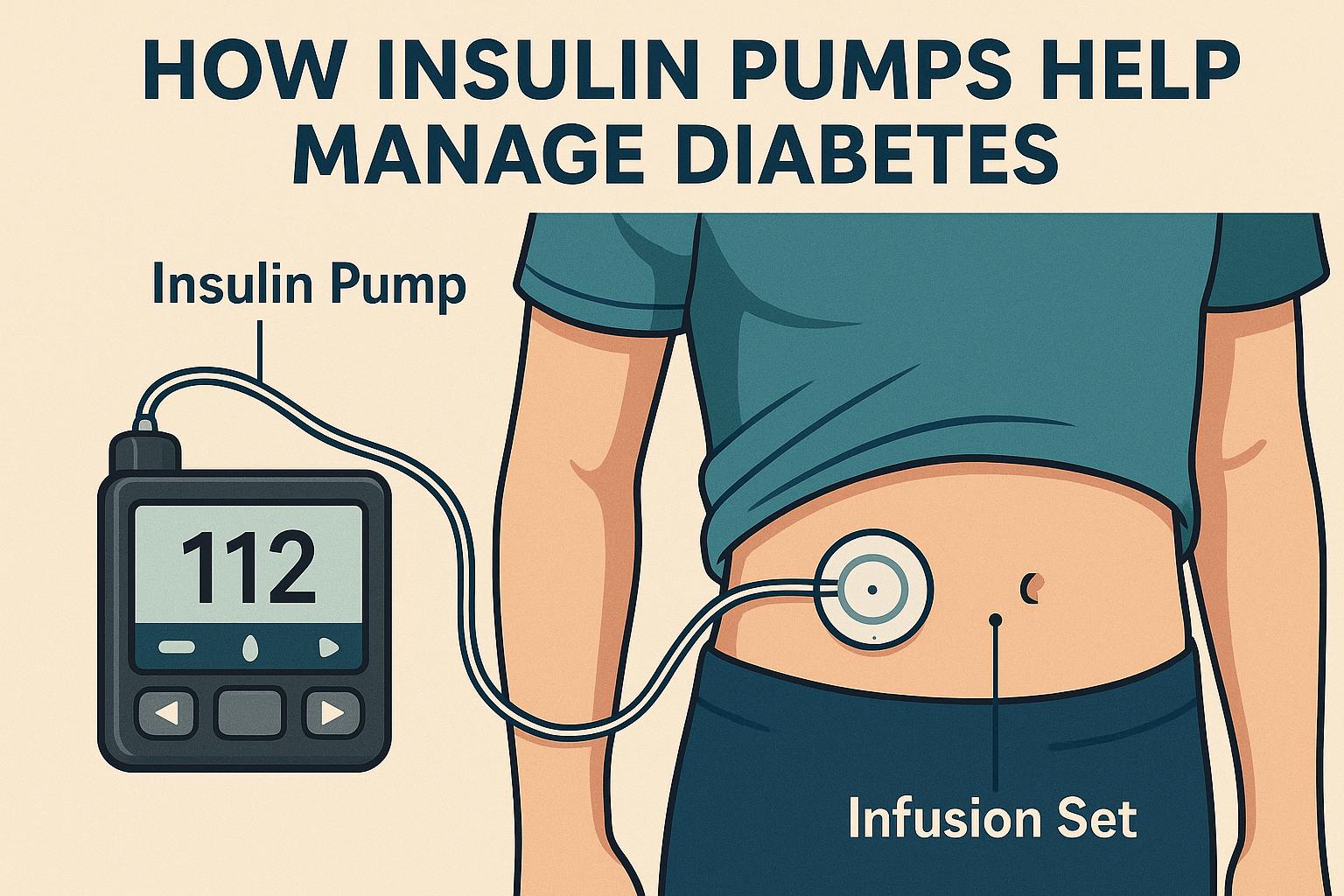
How insulin pumps help manage diabetes.
Understanding Insulin Pumps and Diabetes Management
Managing diabetes effectively is crucial for individuals living with either type 1 or type 2 diabetes. A key component of this management involves maintaining optimal blood glucose levels, a task that can be both challenging and time-consuming. Among the various tools available to aid in diabetes management, the insulin pump stands out as a particularly valuable device. It offers users a more convenient approach to achieve better glucose control, thereby enabling a more flexible daily life. By continuously delivering insulin, the pump provides a solution for those who require frequent insulin administration due to their diabetes conditions.
How Insulin Pumps Function
An insulin pump is a compact, computerized device designed to emulate the function of a human pancreas by delivering small, calculated doses of rapid-acting insulin throughout the day. The primary components of the insulin pump include a pump reservoir that houses the insulin and a cannula inserted subcutaneously under the skin. A set of tubing connects these components, facilitating the delivery of insulin via the cannula directly into the body. One of the significant advantages of an insulin pump is its capacity to let users adjust the insulin delivery rate precisely to match their body’s fluctuating needs, thereby aiding more effective blood glucose level management.
Advantages of Using Insulin Pumps
Consistent Insulin Delivery: One of the paramount benefits of insulin pumps is their ability to provide a steady and continuous insulin flow. This functionality is crucial in stabilizing blood glucose levels, thereby minimizing dramatic fluctuations that individuals might otherwise experience when using multiple daily injections. The continuous delivery method closely mimics how the pancreas would typically release insulin in a person without diabetes.
Flexibility and Convenience: Insulin pumps are highly programmable, allowing users to adjust insulin doses based on varying factors such as physical activity and carbohydrate intake. This feature affords users greater flexibility in managing their diabetes while also supporting a more active and diverse lifestyle. Moreover, the convenience of having a portable device that continually administers insulin means that users can participate in activities without the constant need to pause for insulin injections.
Reduction of Needle Usage: Traditional insulin therapy often involves multiple daily injections, which can be invasive and uncomfortable. Insulin pumps reduce the frequency of these needle pricks significantly. The infusion set, which includes the cannula, only needs changing every two to three days. This reduction in needle usage makes insulin pumps less invasive and more comfortable for users, especially for those with a phobia of needles.
Who Can Benefit from Insulin Pumps?
Insulin pumps are particularly beneficial for individuals with type 1 diabetes who experience frequent episodes of low or high blood sugar due to the body’s inability to produce insulin. They are also advantageous for those with type 2 diabetes requiring intensive insulin therapy, as these individuals often need precise and consistent insulin delivery to meet their metabolic needs.
However, it’s essential to recognize that not everyone with diabetes will need or derive significant benefits from an insulin pump. Factors such as lifestyle, level of comfort with technology, and specific health requirements play crucial roles in determining whether an insulin pump is appropriate. Therefore, it is advisable for individuals to consult with their healthcare providers to ascertain whether this technology aligns with their personal diabetes management goals.
Considerations and Challenges
While insulin pumps offer substantial benefits, they are also accompanied by considerations and potential challenges. The initial cost of acquiring an insulin pump, along with ongoing maintenance expenses, can be significant. It is crucial for users to factor in these financial aspects when deciding whether to adopt an insulin pump.
Moreover, users must be prepared to invest time in learning to operate the device effectively. Understanding how to adjust the settings and troubleshoot common issues is a necessary part of ensuring the pump functions optimally. Additionally, the technology can require regular updates or software improvements, which users need to keep abreast of.
An individual’s lifestyle and health status are crucial determinants of whether an insulin pump is suitable. For example, those with an active lifestyle may benefit from the pump’s flexibility in insulin delivery. However, they must also consider how activities such as swimming, contact sports, or other physical pursuits might be managed while using an insulin pump.
In conclusion, insulin pumps are a powerful and innovative tool in diabetes management. They provide many users with the opportunity to enhance their glucose control while supporting a more flexible and dynamic lifestyle. For those interested in learning more about insulin pumps and their role in managing diabetes, various resources and organizations are dedicated to diabetes care. For more detailed information, individuals can refer to resources such as the American Diabetes Association or engage in direct consultation with healthcare professionals. Understanding all aspects of insulin pump use, from advantages to challenges, enables individuals to make informed decisions regarding their diabetes management strategies.









